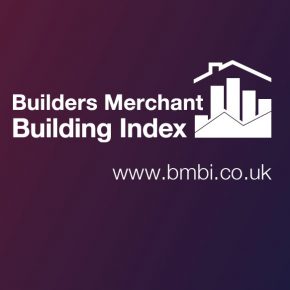
Advice on Choosing a Proper Safety Harnesses
On any job site, safety is paramount. There are any number of situations in which a worker can be hurt on the job. Only with the proper precautions can everyone remain as safe as possible. That means having the right equipment.
Safety harnesses are pivotal when it comes to having the right equipment. As it turns out, there are plenty of reasons why you should have a good safety harness on hand. Here are some helpful tips that can help you make the right choice…
What is it Being Used for?
Safety harnesses come in many shapes and sizes. Each of them is created for specific uses as well, whether it be in construction, industrial, or for another use. In order to choose the proper safety harness, you first need to have a clear understanding of what the safety harness will be used for in the first place.
Each different type of safety harness has a dorsal ring, for instance. There are several lanyards to choose from and each has its pros and cons. Going into the situation knowing precisely what the safety harness will be used for should put you in the proper position to make the right choice.
Is it Comfortable?
Though it is important to know what it is being used for, a safety harness also has to be comfortable. Safety equipment is only useful if you are using it and wearing an uncomfortable piece of equipment will more often than not lead to it not being worn. Who would want to wear something that pinches, chafes, and is otherwise uncomfortable?
When choosing a safety harness, it absolutely must be comfortable. Part of that has to do with the fit (more on that below) but it can have to do with weight, material, and more. Find a harness that feels comfortable to wear and you won’t ever hesitate when it comes time to use it.
Is it the Right Size/Fit?
Speaking of comfort, size, and fit are important features worth considering. Improperly fitting safety equipment can fail for any number of reasons. Keep it too tight and the strain may result in a tear or rip rather than stopping the fall. Keep it too loose, and it might be possible to come out of the harness altogether. It has to be snug, yet firm.
You should be able to slip a few fingers (but not an entire fist) between yourself and the harness. Make sure that there isn’t excess webbing hanging, or really anything that could possibly get snagged or caught. If worn correctly, many safety harnesses will have the D-ring positioned right between the shoulder blades so that force is distributed evenly throughout your body.
Has it Been Inspected?
Finally, it is critical that a safety harness be given the proper time and attention. Even brand-new harnesses can have flaws to them, and a small flaw can have dangerous.
Even seemingly small blemishes can lead to larger tears and rips. By doing a visual inspection before each use, you can ensure that each of the safety harnesses used is up to standards. Only through vigilance can workers remain safe even when working on elevated surfaces. When something does go wrong, fall arrest equipment will be there to provide protection. Using this guide, it will take no time whatsoever to find the proper safety harness to do the job.
Latest news

18th December 2024
BMBI: October Merchant sales rally with a +7.3% month-on-month increase
The latest Builders Merchant Building Index (BMBI) report shows builders’ merchants’ value sales in October were up +1.2% compared to the same month last year.
Posted in Articles, Bathrooms & Toilets, Bricks & Blocks, Building Associations & Institutes, Building Industry News, Building Products & Structures, Building Services, Building Systems, Civil Engineering, Cladding, Concrete, Cement, Admixtures, Drainage, Drainage Services, Floors, Garden, Hand Tools, Hard Landscaping & Walkways, Health & Safety, Heating Systems, Controls and Management, Heating, Ventilation and Air Conditioning - HVAC, Information Technology, Interior Design & Construction, Interiors, Landscaping, news, Paints, Paints, Coatings & Finishes, Pipes, Pipes & Fittings, Plant, Equipment and Hire, Plumbing, Power Tools, Publications, Research & Materials Testing, Restoration & Refurbishment, Retrofit & Renovation, Site Preparation, Sustainability & Energy Efficiency, Timber Buildings and Timber Products, Walls, Waste Management & Recycling
18th December 2024
GEZE UK announce Kids' Village charity partnership
Kids’ Village is delighted to have partnered with GEZE UK as their 2025 charity of the year – find out more via the article…
Posted in Access Control & Door Entry Systems, Architectural Ironmongery, Articles, Building Industry Events, Building Industry News, Building Products & Structures, Building Services, Charity work, Doors, Facility Management & Building Services, Health & Safety, Restoration & Refurbishment, Retrofit & Renovation, Security and Fire Protection, Windows
18th December 2024
Encon Achieves 5% Club Silver Membership
The Encon Group, the leading independent distributor of building materials, is pleased to announce that it has been awarded Silver membership of The 5% Club by the 2024/25 Employer Audit Scheme.
Posted in Articles, Awards, Bricks & Blocks, Building Associations & Institutes, Building Industry Events, Building Industry News, Building Products & Structures, Building Regulations & Accreditations, Building Services, Building Systems, Civil Engineering, Cladding, Concrete, Cement, Admixtures, Facades, Hard Landscaping & Walkways, Health & Safety, Insulation, Landscaping, Plant, Equipment and Hire, Recruitment, Restoration & Refurbishment, Retrofit & Renovation, Site Preparation, Training, Walls
18th December 2024
SWA: A focus on Steel Window Association member West Leigh
Located in Charlton, South London, SWA member West Leigh was established during the Blitz, in 1943. During the destruction in London, the company helped in repairing windows and facades that had been damaged by bombings throughout the city.
Posted in Articles, Building Associations & Institutes, Building Industry News, Building Products & Structures, Building Services, Building Systems, Case Studies, Facades, Glass, Glazing, Restoration & Refurbishment, Retrofit & Renovation, Steel and Structural Frames, Walls, Windows
 Sign up:
Sign up: